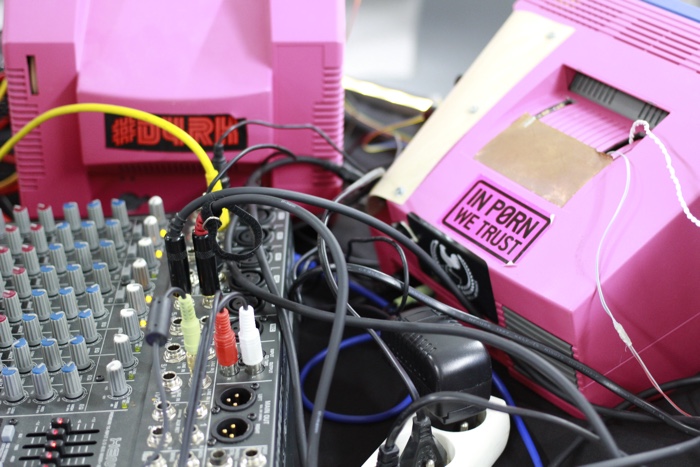
Graffiti Research Lab France, The Dead Minitel Orchestra
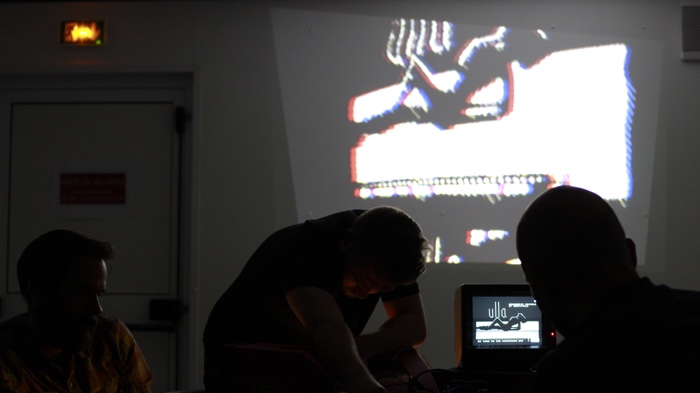
Graffiti Research Lab France, The Dead Minitel Orchestra
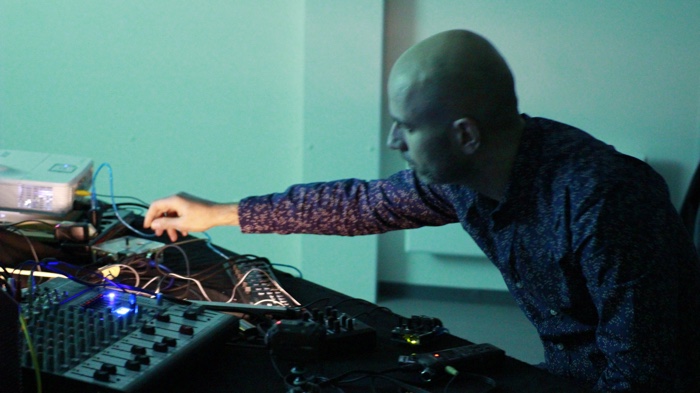
Graffiti Research Lab France, The Dead Minitel Orchestra
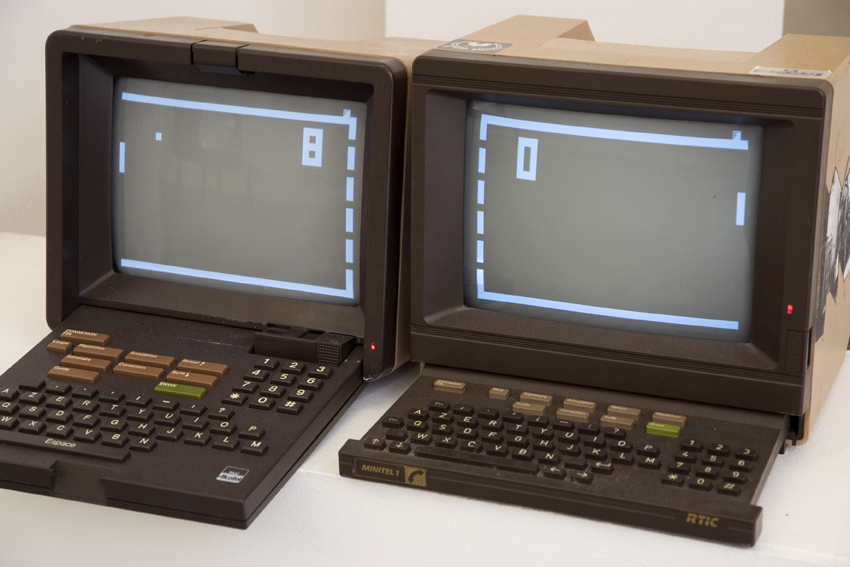
Graffiti Research Lab France, The Dead Minitel Orchestra (Minitel Pong)
In 1982, the French public telecommunications company launched a revolutionary system combining the telephone and information technology. It was a beige, plastic box and it was called the Minitel.
The screen-keyboard set was delivered for free to French homes. People could electronically check the weather or their horoscope, find local restaurants, apply to university, book a holiday, buy shoes, monitor their bank accounts, etc. They could even chat online and have some rudimentary forms of cybersex. It was the world wide web before the world wide web and actually it wasn’t even world wide because it was limited to the territory of France. I grew up in Belgium feeling left out, envious and cheated.

Yves Denais using the Minitel on his dairy farm in the Brittany region of France. Photo: Ed Alcock for The New York Times
It was an avant-garde domestic technology and millions of people were still using it when France Telecom decided to pull the plug on the service in 2012.
In 2013, members of the Graffiti Research Lab France decided to set up a DEad Minitel Orchestra, a series of live performance and artistic installations that explore the sonic and visual afterlife of the defunct Videotex online service. The result is experimental, joyful, often charming and sometimes absurd.
DEad Minitel Orchestra, performance at Photophore festival, 2015
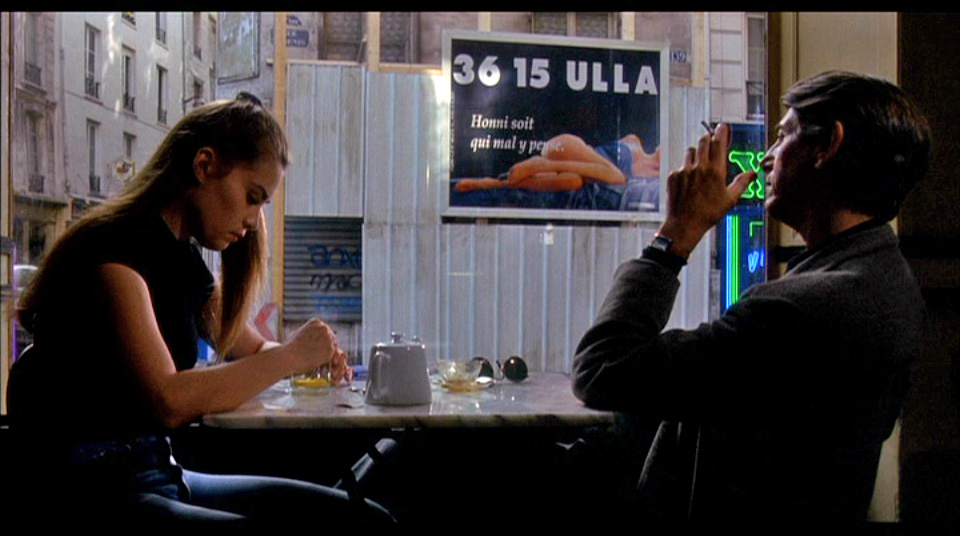
Minitel sex ad in Roman Polanski’s 1992 movie Bitter Moon
The Dead Minitel Orchestra is a project by Antoine Bonnet, Martin De Bie and Jerome Saint-Clair. I’ve been loving what the G.R.L. F.R. have been doing for years so the DeMO gave me the perfect excuse to contact them and ask for their opinions on quaint devices and extinct technologies:
Hi Jerome, Martin and Antoine! I grew up in French-speaking Belgium and was hyper envious of all these 36 15 services French people seemed to enjoy. Each time i hear the name Ulla, i still think of a brief sequence from a film by Roman Polanski. Minitel seemed to be the acme of sophistication and modernity at the time. Is the Minitel still present in French contemporary culture? Has some kind of nostalgic cult developed around it?
The Minitel was definitely a thing in France in the 80s. Imagine a pre-WWW area (year 1982) where suddenly every person with a phone landline can go get a revolutionary device for free from the national phone company (named PTT at the time) and connect to online services.
Some of those services were free to connect to (ie: white and yellow pages), some others were super expensive pay-per-minute (forums, adult and porn chat services among others). Looking back, it feels strange to realize, while watching archived national news dealing with the Minitel, that there was a real nationalist pride accompanying it. There was a real struggle to stay competitive against others countries in terms of technology and industry, to remain autonomous. Remember, every country had its computer company (Olivetti, Sinclair, …)
As a consequence of this mass adoption and national exception feeling (you know how French people are), everyone above 20 yo in France has a story with the Minitel. For the youngest ones, it’s the weird computer sitting near the telephone at their grand-parents’ place. For the others it’s the first connected terminal they have ever used. And it’s true.
Each time we perform or exhibit Minitels for a show, we notice a real nostalgia in the eyes of the audience. So much nostalgia that we are sometimes thinking of doing a “People staring at Minitels” project. We would end up with totally different portraits than Kyle McDonald‘s People staring at computers.
It also sometimes becomes an intergenerational transmission thing. Kids (who are too young to be aware about it) are usually super curious about it and their parents are always proud to tell them what it is and the relation they had with the Minitel. Maybe some sort of “finally a technological item my kids don’t know about and that I can explain” effect.
Despite all this, we wouldn’t say there is now a cult developed around it. But it was definitely part of people’s everyday life. Not only as a device they used, but also through TV and billboard ads and also many wild ads for the “pink minitel” services showing nude women, along the roads, in abandoned gas stations … The Minitel was also present during turning points of people’s life: you were able to check online if you passed the baccalaureat, or register for University. And that’s the kind of story we hear each time. The Minitel is our digital Madeleine de Proust.
Internationally speaking, views are quite divergent. Envy for some like you, Régine, and sometimes curiosity. But also jokes. Golan Levin told me he knows some. I’d be curious to hear them.
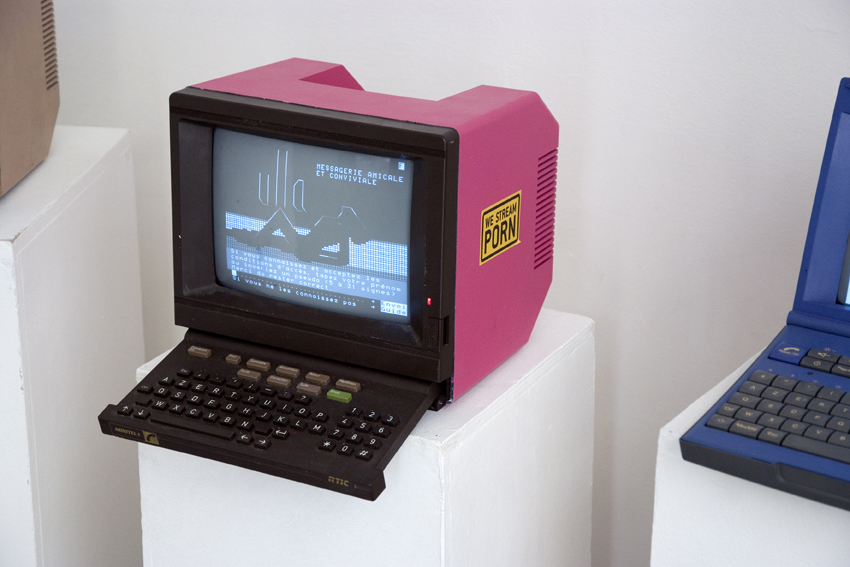
Graffiti Research Lab France, The Dead Minitel Orchestra
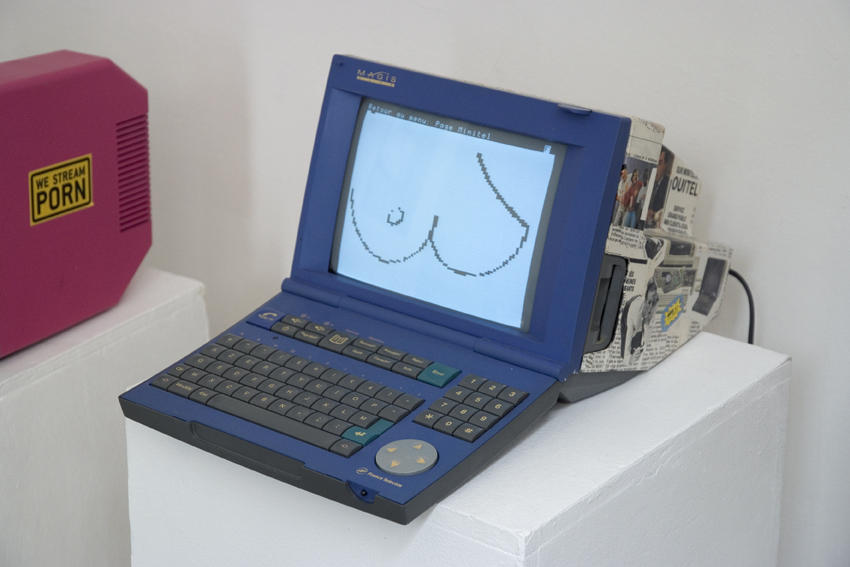
Graffiti Research Lab France, The Dead Minitel Orchestra (minitel Boobs)
Antoine: When I was kid (I was around 8, I guess) , there were huge ads for “minitel rose” on the roads. They were everywhere and particularly on the roads leading to highways (Paris peripherique). I really enjoyed seeing these ads because when I was seeing them, it meant HOLIDAYS !!
I never got curious about these ULLA, CUM,… services but I really liked the way these ads were placed under dark spots (under bridges, in corners,..), how they were aging, losing colors, ungluing or scratched,… The girls on the pictures were almost naked but it never shocked me… I think I didn’t notice until I became a teenager.
Martin: I remember my parents using it to access information when I was a kid. It was some kind of mysterious device I hadn’t really access to, except when I was using it by mimicry, more as a toy, without even connecting to any service (hopefully for my parents’ phone bill). It’s only later when I was 15 and that I did connect under my mother’s supervision to check school grades that I started to realize how it could be used for. I really understood how revolutionary it was when I first experienced the Internet, a few years later. Being able to use it now, in my own artistic practice, is way more satisfying than typing pointlessly on a bizarre device.
Jerome: I personally remember going to the post office (the phone company and post office were the same national company at the time) with the paper my parents received in the mail to go get a Minitel. And also some years later take it back to get a newer version, probably the Minitel 1B. I remember my father checking the National lottery results and my mother placing orders on La Redoute (a mail order company).
Ad for ‘online sex’ service 3615 ULLA, 2003
Does the Minitel have some specific, technological or other, features that make it particularly interesting to use to generate sound and images? Or is it producing the same kind of audio and images as any other type of old bits of electronics?
It is worse than what you can imagine. What’s funny is that people’s memory tend to be biased and blurred with later computers or game console they used.
In fact, the Minitel does a single and monotone beep. It’s not even 8 bit music capable. On a graphical point of view, it has 2 display modes (text and graphics), using grayscale colors (late models, difficult to find allow color though). In addition to that, the graphical mode is not even pixel based but rather character based, with, for each block of character, a 2×3 stack of rectangles whose color can be either the foreground or background color of the character.
This explains why it has its own aesthetic in terms of graphics and that’s what makes it so interesting.
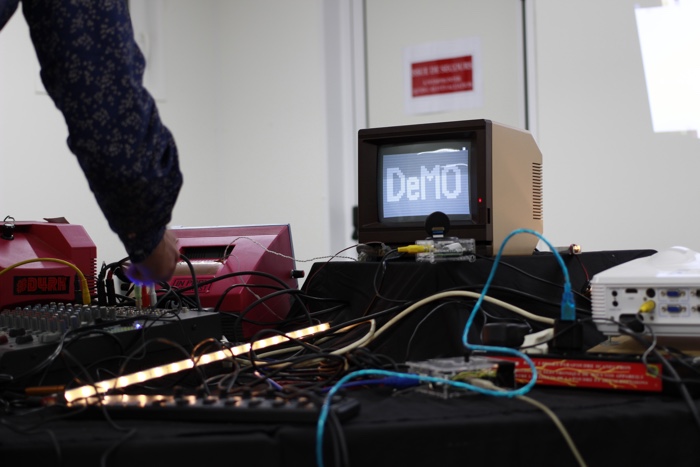
Graffiti Research Lab France, The Dead Minitel Orchestra
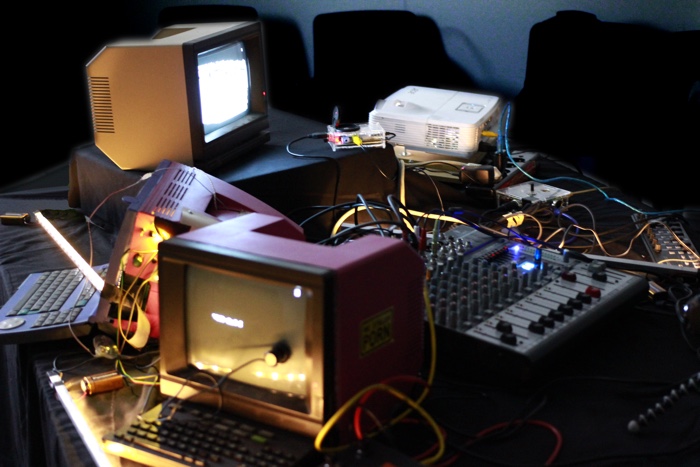
Graffiti Research Lab France, The Dead Minitel Orchestra
Why is it the Dead Minitel Orchestra instead of just the Minitel Orchestra? Does the ‘Dead” word refer to the fact that you’ve completely re-purposed and modified the functioning of the device? Or is it there to highlight that it’s one of those dead tech that came to be supplanted by another one?
We picked “dead” for two reasons. The first one because we wanted to use the De.M.O. acronym, which is also a reference to the demo scene.
The second one because the Minitel, in its original form, is actually dead. It is just a passive terminal, by design, and all the services (remote servers) have been unplugged on June 30th 2012.
As a consequence, we’re not murderers but rather Victor Frankenstein trying to resurrect a dead body of electronics. It is repurposed and its functioning was modified because we had no other choice if we wanted to be able to keep using it.
It has not been totally supplanted by another technology. It kept living along with the Internet until Orange decided to cut the services. Lots of people were still using it, back in 2012. Mostly because those persons were used to it and they had a single use case: car mechanics checking parts availability, farmers having a look at the weather forecasts, individuals checking the stock market, …
We used “Dead” because we start working with the Minitel a few weeks before Orange shuts down the service on June 30th 2012. Our first Minitel exhibition was a tribute, a death notice of the service. We remake some emblematic “3615” pages and create some visuals and animation to say goodbye. Since this exhibition we worked to “get the hell out of it” to get some kind of DemoScene practice with it, we even tried to modify the electronic to generate some generative visuals.
The idea of making music came later, and the name came naturally, from a dead technology we make experimental music as an orchestra, and using visuals and interfaces to get control over sound as a D.e.M.O.
DEad Minitel Orchestra, performance at Plateforme Gallery, Paris in 2013
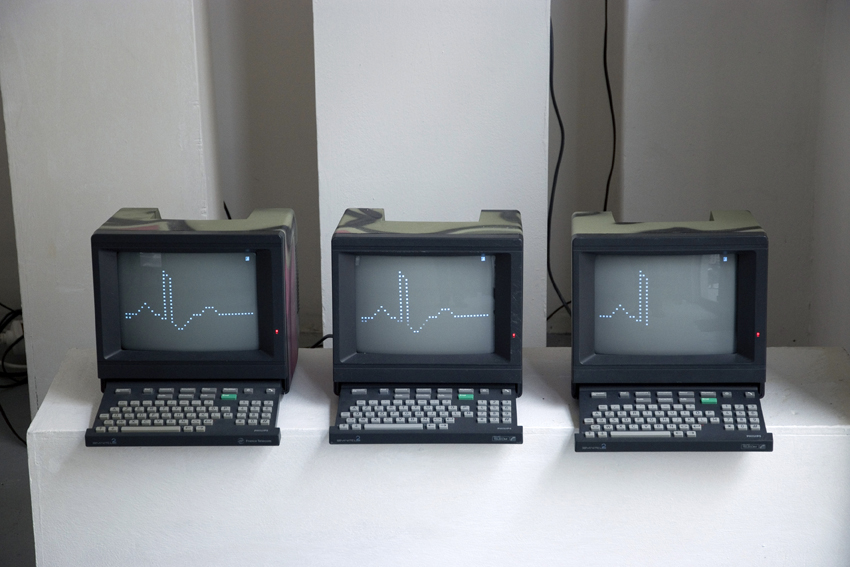
Graffiti Research Lab France, The Dead Minitel Orchestra (Minitels Electrocardio)
Is the DeMo a comment or reflection on planned obsolescence and on our throwaway culture?
We wouldn’t say it was planned obsolescence. It doesn’t fit the “give it for free and make money on the services” business model of the Minitel. It was built to last. Hopefully for us, the Minitels we own are still working, more than 25 years after they were manufactured. It’s not too bad when you know that CRT (cathode ray tube) screens have a life expectancy of 20 years. Of course, some of them are a bit tired. The almost-dead-CRT effect is not bad though. However, sooner or later, all of our Minitels’ screen will be dead. We’ll have to figure out something else to workaround that.
What are the challenges of working with a dead technology like this one?
There are indeed various challenges. The first one was to find a starting point. Florent Deloison pointed us to Fabrice, Renaud, PG and Phil (from the Toulouse Tetalab) Webcam to Minitel project. That’s how it all began. We also found some good technical documentation.
We made the Tetalab’s original code evolve to work offline and we ended up creating a dedicated Minitel library for Arduino. Mostly because we wanted to be able to easily recreate classical Minitel screens: 36-15 ULLA, the yellow pages landing screen. And, moving forward, a Minitel-like Nyan Cat, a non playable Pong and an intermittently flattening electrocardiogram (using the single beep of the Minitel). Our goal at that time was to repurpose the Minitel as a low-tech photo frame. Either to host the screens mentioned above or for our 36-15 Selfie project.
Later came the idea to use it in a totally different way and make music/sound with it. At the very beginning we were using screen luminosity variations (either by circuit bending the graphical chip or by displaying random characters) to generate or modulate sound. We later used a homemade MIDI clock to sync the Minitels. In our last setup, we only use the Minitel and its keyboard as an interface and everything is sent to Raspberry Pis handling both MIDI and audio output. We’re also using one Minitel to display graphics and use it as a source for realtime VJ effects through another Raspberry equipped with a camera. The project is shifting to include more of the Minitel culture, using sound samples of Minitel TV ads or news saying how great the Minitel technology was. That’s really a work in progress.
Each time we have a performance planned is an opportunity to move forward on this project.
Jerome Saint-Clair and Antoine Bonnet for GRL FR, Traffic Booster
Also and completely unrelated Traffic Booster! I find it hilarious, maybe because i don’t even have a driving license. It must be one of the most irritating invention for car drivers though. You could get lynched here in Italy for setting up something like that at a traffic light. I suspect that people in Paris where you’ve installed it have not been very amused by it. Why did you make the Traffic Booster? How obvious is it to drivers that the beep doesn’t actually come from an impatient driver?
Jerome: That’s a project people really enjoy. I mean they enjoy it when they watch the video, not as victims. In the meantime I’m pretty sure drivers didn’t even notice it was automatic. They are so used to stress and angriness.
I made the traffic booster as a reaction to the need for speed (not the video game) in our society. When you live in a large city you’re absorbed by its pace. You have no other choice than to conform with it. If you don’t comply, it makes people angry. Try to walk slowly in the corridors of the metro when people are rushing to the office in the morning and you’ll notice. Same thing on the road. Driver will put themselves or others at risk to save only a few seconds, without realizing that they’ll have to stop at the next traffic lights and actually not gain time at all. This mechanism applies to a lot of things in our occidental societies. Plus there are devices and rules to force you to do so and to record that. Fixed office hours along with time recorders, personal objectives along with variable pay, Uber-like companies along with smartphone apps, … In the end, technology is not a real progress but is used to control people. And people don’t step down. They comply and compete. The traffic booster is there to remind that: beware of what’s forcing you to go faster without giving you the time to actually step aside, look around and think of what’s really going on here.
